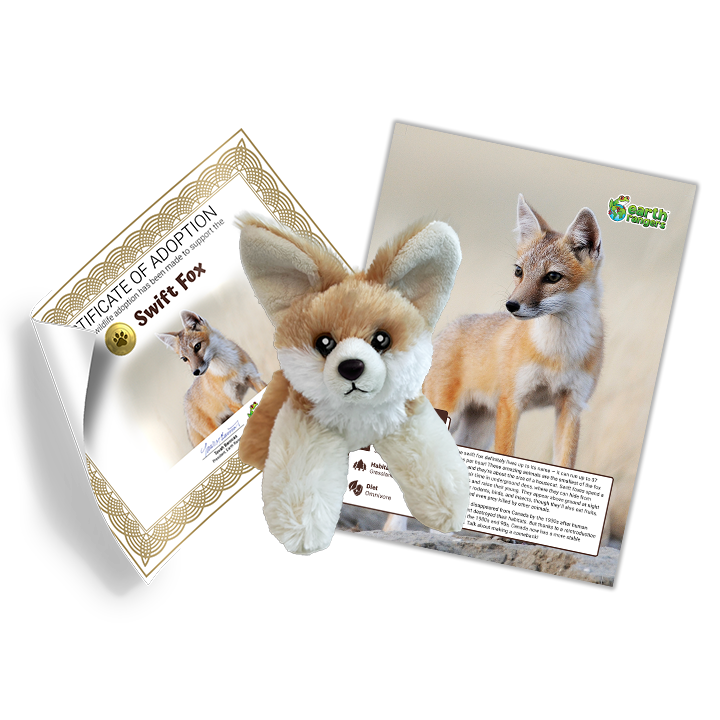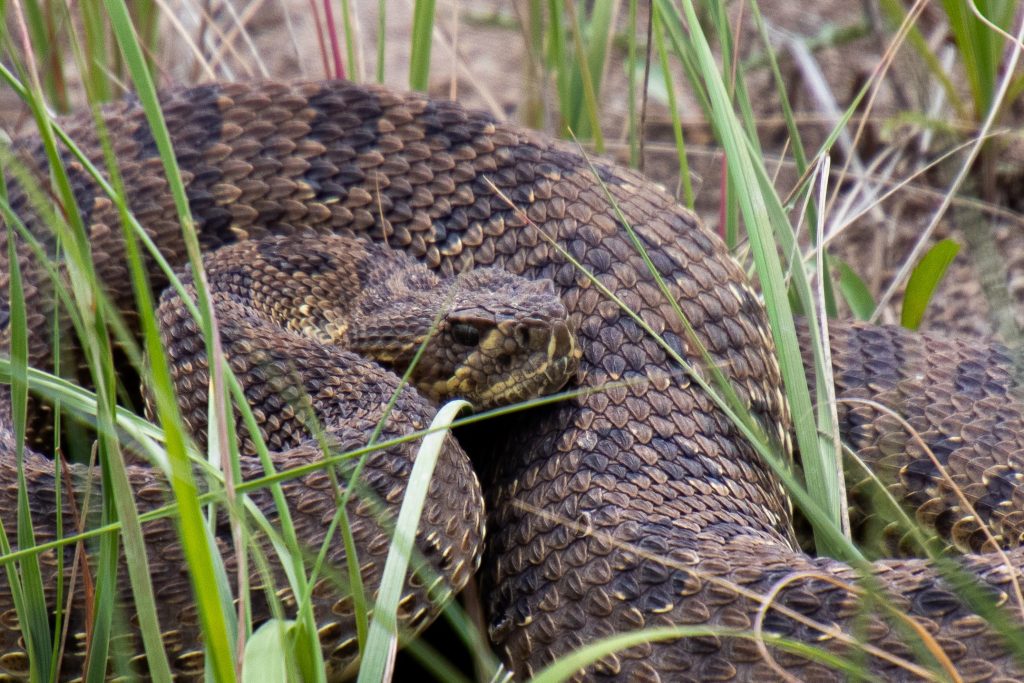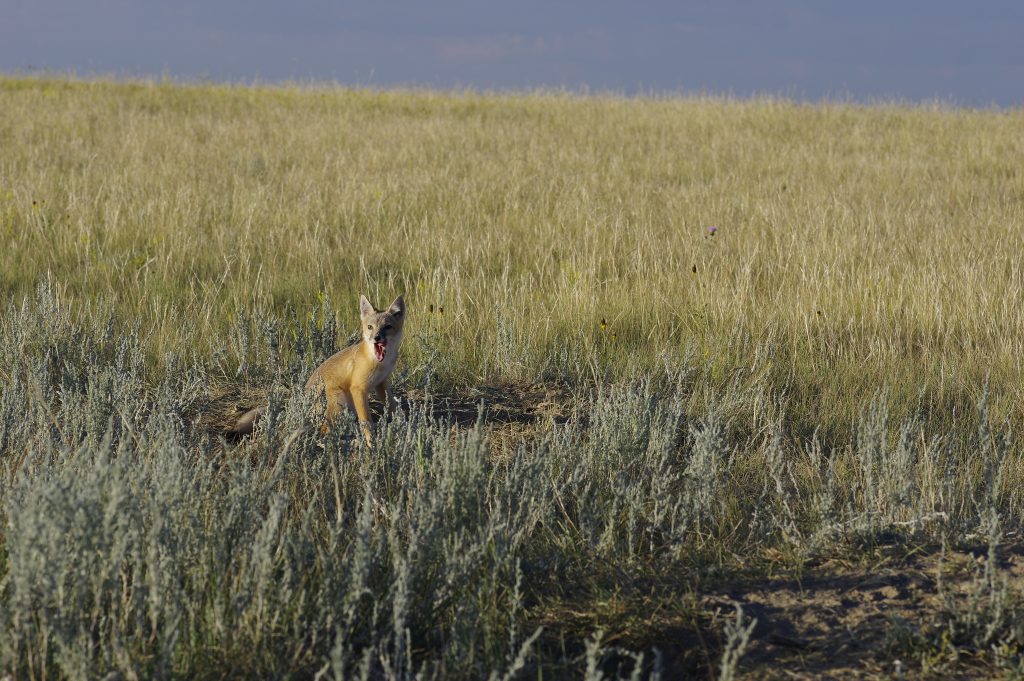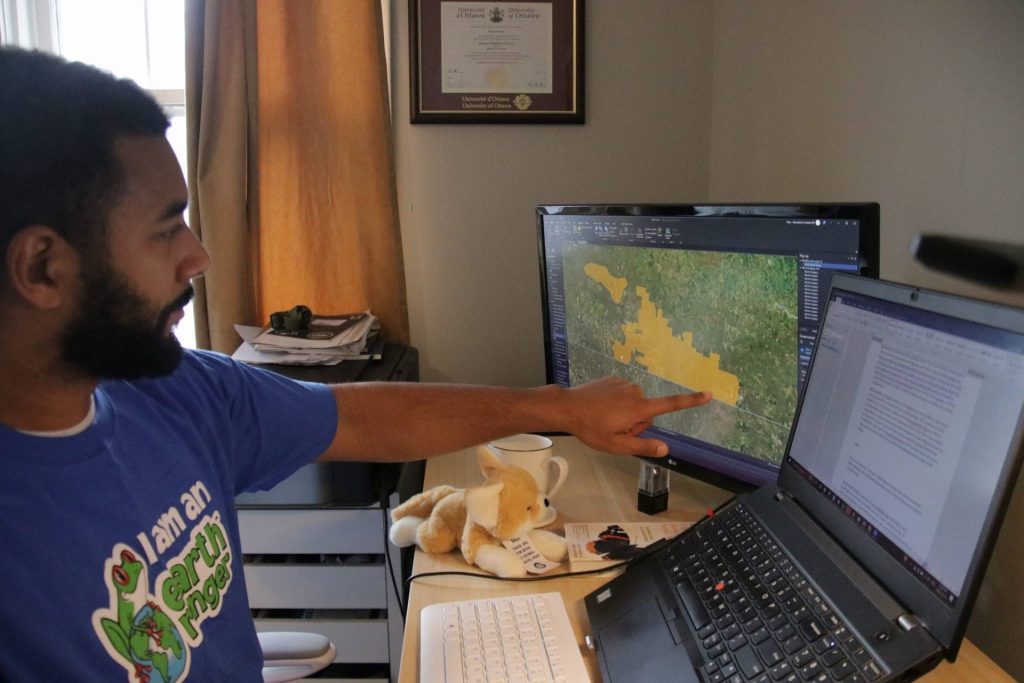
Hi, I’m Peter Soroye! I work for Wildlife Conservation Society (WCS) Canada, and I’m a huge Swiftie — I want to save swift foxes and their habitats in Canada’s prairies! My job is to identify and protect Key Biodiversity Areas (KBAs) where swift foxes live.
Did you know that swift foxes disappeared from Canada in the 1930s? People turned our prairies’ natural grassland into farmland, so the foxes didn’t have a place to live anymore. But, starting in the 1980s, foxes were reintroduced, or brought back, into the prairies! Now, Canada has a more stable number of swift foxes. Talk about a comeback!
But there’s still a long way to go before swift foxes are safe. Canada’s grasslands are one of the most endangered ecosystems on Earth. Climate change and construction continue to threaten swift foxes and other animals that live on the prairies.
When you adopt a swift fox from Earth Rangers, you’ll support my mission to learn exactly where swift foxes live. That way, we can give these animals the best protection possible. Plus, you’ll receive an adorable plushie, an official adoption certificate, and a cool poster full of fox facts!

Adventures in the Prairie Grasslands
This fall has been an exciting time for Swifties of all kinds! WCS Canada has continued to identify Key Biodiversity Areas (KBAs) across swift fox habitats in Canada’s prairies. We’ve involved special experts, other conservation organizations, and Indigenous communities. We’ve also come close to identifying Grasslands National Park and Prairie Pastures Conservation Area as KBAs. These are some of Canada’s best habitats for swift foxes. Identifying them as KBAs will draw attention to their importance and attract more protection for swift foxes and the species that depend on them. In 2024, WCS Canada will be finishing proposals for several KBAs in swift fox habitat. We hope that these sites will be officially recognized soon!
While most KBA work happens remotely, on the computer, our work on KBAs in Saskatchewan took us into the field at a few points last year. Early in the summer, I visited the Grasslands National Park Candidate KBA, where swift foxes have been reintroduced. Swift foxes stayed elusive and unseen, but other iconic prairie species like burrowing owls, prairie rattlesnakes, and bison were on full display. Check out these great photos that I took!



The Milk River Area in southeastern Alberta is another area where swift foxes can be found. My friend Michael Rudy, a KBA coordinator who has been leading work on identifying KBAs for Swift Fox, was able to snap this photo of a yawning swift fox during one of his visits to this area.

Conservation on the Computer
Like a lot of conservation, most work on KBAs happens remotely. I work virtually with KBA Coordinators in the prairies to find important sites for swift foxes and other species. My tools of the trade? A computer, a keyboard, and Swiftie — my very own swift fox stuffie, adopted from Earth Rangers!

In this photo, I’m pointing out a draft boundary of the Grasslands National Park Candidate KBA. We develop KBA boundaries by working closely with experts who know these species and sites inside and out.

Conservation in Indigenous Communities

In October, I hosted a workshop at the kihci-okâwîmâw askiy (Great Mother Earth) Knowledge Centre at University of Saskatchewan. We partnered with Birds Canada to put on the event. Together, twenty of us learned about mapping KBAs on Indigenous lands. We shared our perspectives on how to incorporate Indigenous values into KBAs.


How do you adopt an artic fox in the
Game
I thought it was Taylor Swift as well happysunshine123 !!!!
They are so cute!!!
Do Swift foxes hibernate?
The foxes are so cute! Great pictures too!
I wish that my mom would let me adopt an animal on the game.
I love swift foxes!
my bffs last name is fox!
my dad will mabey by a bager on the app!!